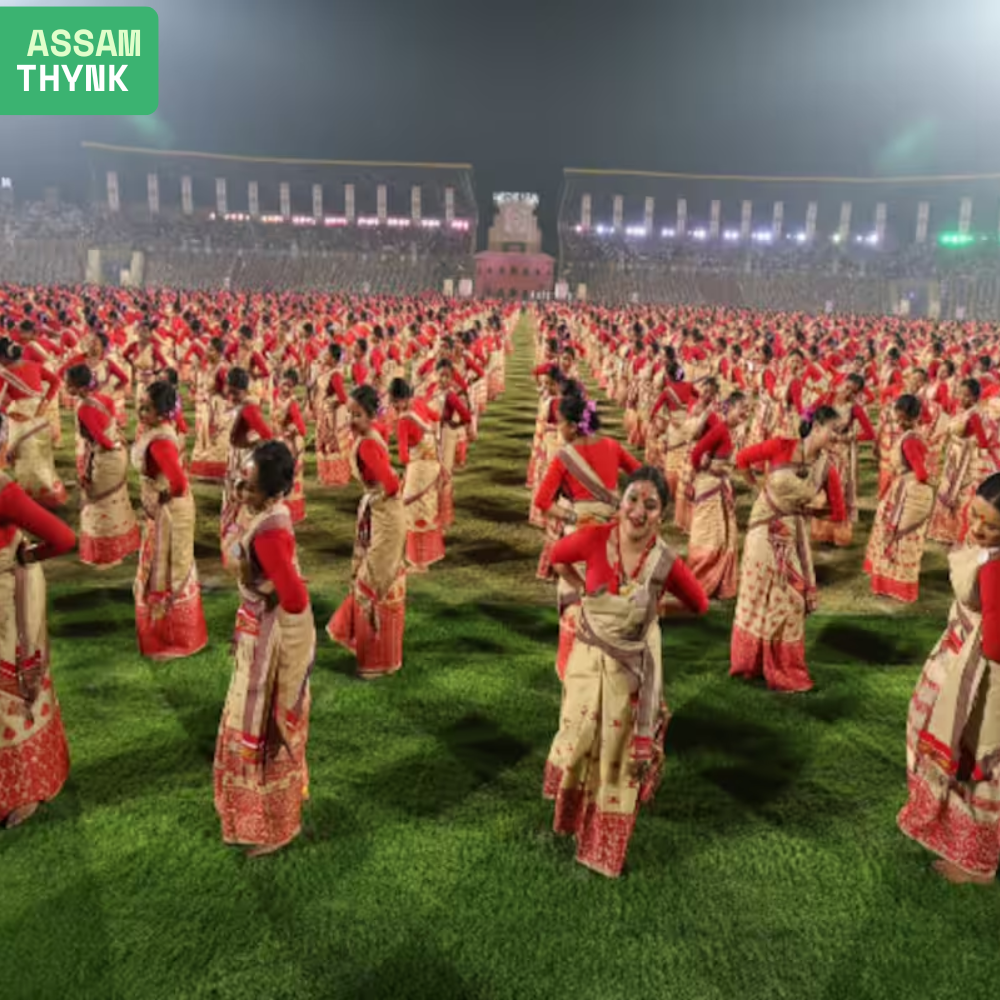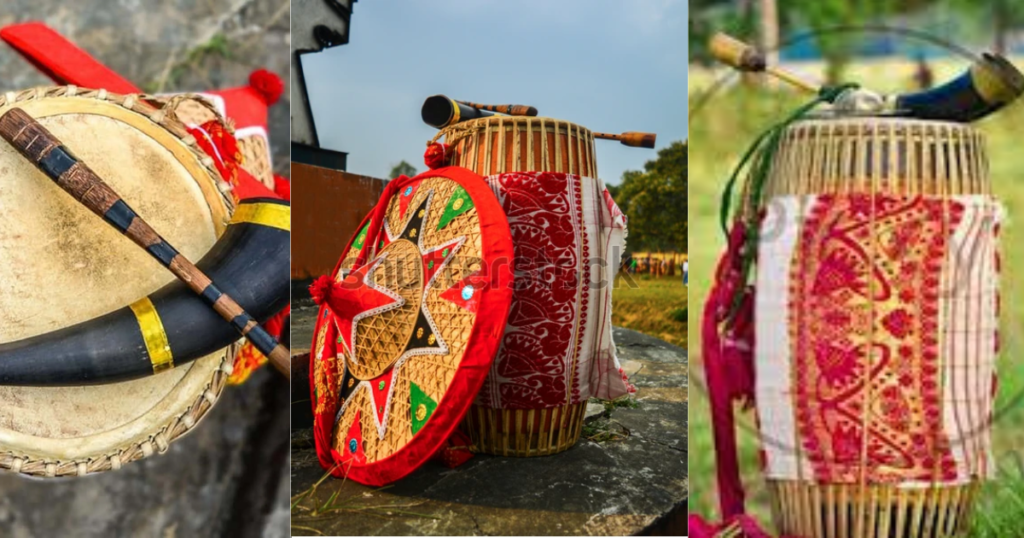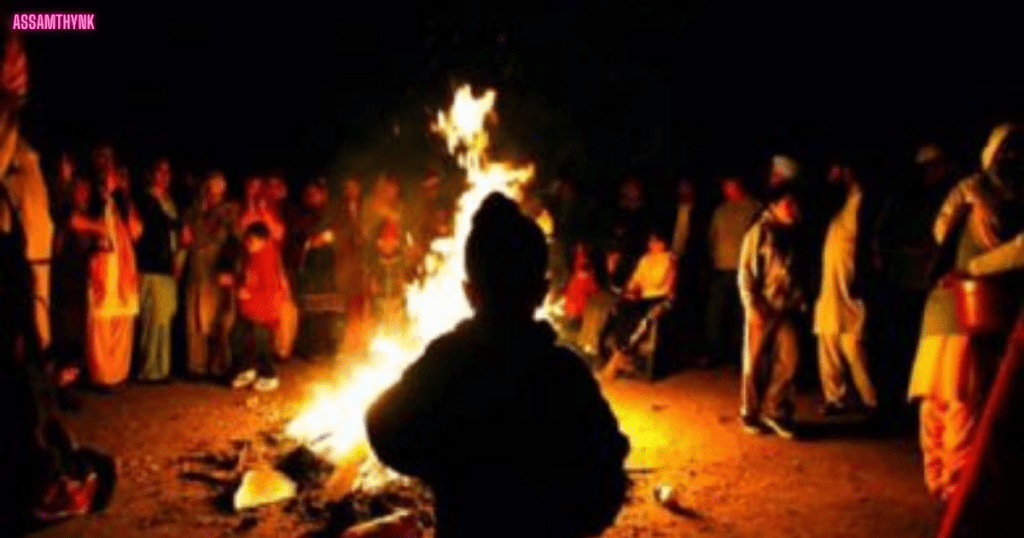Introduction
The Bihu Festival of Assam is one of the most vibrant and significant cultural celebrations in the state, reflecting the rich heritage and agricultural lifestyle of the Assamese people. Celebrated with immense joy and enthusiasm, the festival marks important phases of the farming calendar and is observed in three forms – Rongali, Kongali, and Bhogali Bihu. Each Bihu showcases unique traditions, dances, music, and rituals that bring communities together in festive harmony. The Bihu Festival of Assam is not only a celebration of nature and harvest but also a symbol of unity, cultural pride, and the deep-rooted connection between the people and their land.
Table of Contents
Toggle1. Rongali or Bohag Bihu: The Festival of New Beginnings
Rongali Bihu, also known as Bohag Bihu, is the most vibrant and widely celebrated festival in Assam. It marks the beginning of the Assamese New Year and the arrival of spring, typically celebrated in the month of Bohag (April). This Bihu symbolises new beginnings, renewal of life, and the start of the sowing season, making it one of great joy and agricultural importance.
Rongali Bihu is not just a festival but a cultural expression of the Assamese people. It is a time when nature comes alive with blooming flowers, chirping birds, and fresh greenery. The whole state resonates with the sound of traditional instruments like the dhol, pepa, and baanhi, as people participate in Bihu songs (Bihu Geet) and Bihu dance (Bihu Naas).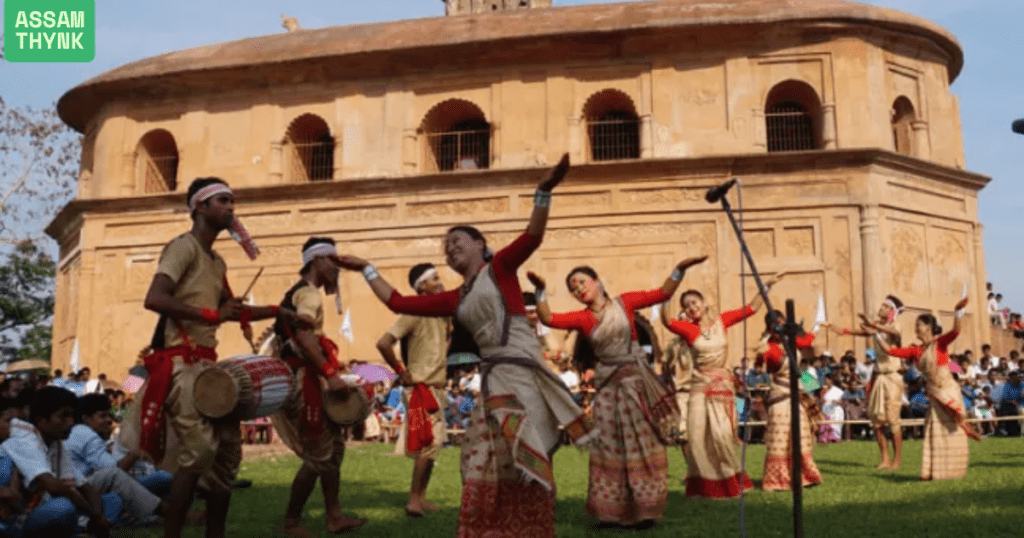
The celebrations extend over several days, each with its own name and rituals. It begins with Goru Bihu, where cows are bathed, decorated, and worshipped, acknowledging their role in agriculture. Manuh Bihu follows, where people wear new clothes, seek blessings from elders, and exchange gifts. The days that follow are filled with community feasts, fairs, and cultural performances.
Young men and women gather in fields and courtyards, dancing gracefully in traditional attire — women in mekhela chador, and men with dhoti and gamusa. The songs are filled with themes of love, nature, and youthful energy.
Rongali Bihu promotes unity, joy, and cultural pride among the people of Assam. Beyond its agrarian roots, it is a festival of hope, happiness, and a time for families and communities to come together and celebrate life.
Significance:
This festival welcomes the season of spring, signifying rejuvenation and hope. It also marks the beginning of the sowing season for farmers, making it a festival of agricultural importance.
Customs and Traditions:
Bihu dance (Bihu Naas) and Bihu songs (Bihu Geet) are the heart of the celebration.
Youth gather in open fields and perform group dances with rhythmic movements and vibrant music.
Traditional musical instruments like dhol (drum), pepa (buffalo horn pipe), gagana, toka, and baanhi (flute) are played.
People visit relatives and friends, offering traditional sweets and sharing joy.
Homes are cleaned and decorated, and traditional Assamese attire is worn.
2. Kongali or Kati Bihu: The Festival of Reflection and Prayer
Kongali Bihu, also known as Kati Bihu, is observed in mid-October and is the most austere of the three Bihu festivals of Assam. Unlike the vibrant Rongali Bihu and the feasting of Bhogali Bihu, Kati Bihu is a time of reflection, prayer, and spiritual connection, especially for the farming community.
During this period, paddy crops are still growing, and farmers are in a state of uncertainty and hope, as their granaries remain empty. As a result, celebrations are modest but deeply symbolic. The main ritual of Kati Bihu involves lighting ‘saki’ (earthen lamps) in paddy fields, under the Tulsi plant, and around the house. These lamps are believed to ward off evil spirits and protect the crops from insects and pests.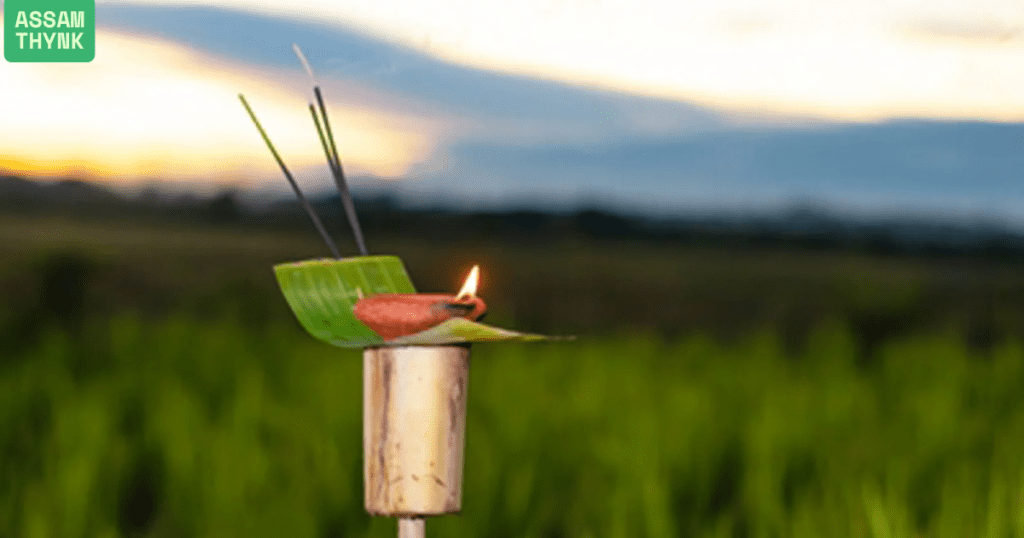
Families pray for a good harvest, and farmers also perform rituals to drive away pests from the fields using chanting and bamboo sticks. There is little feasting or music, and the mood is contemplative.
Kongali Bihu reflects the close bond between the people of Assam and their land. It is a festival that emphasizes hope, faith, and the cycle of agriculture, reminding everyone of nature’s power and the importance of gratitude.
Significance:
Kongali Bihu is a time of prayer and hope. Farmers light ‘saki’ (earthen lamps) in their paddy fields to pray for a good harvest and protect the crops from evil forces and pests.
Customs and Traditions:
Earthen lamps are lit under the sacred Tulsi plant, in granaries, and near paddy fields.
Farmers chant incantations and perform rituals to ward off pests like insects and worms.
It’s a time of introspection, with minimal feasting or singing.
The festival reflects the spiritual and practical concerns of Assamese life, focusing on protection, sustainability, and reverence for nature.
3. Bhogali or Magh Bihu: The Festival of Feasting and Harvest
Bhogali Bihu, also known as Magh Bihu, is the harvest festival of Assam, celebrated in mid-January. It marks the end of the harvesting season and is a time of abundance, feasting, and community celebration. Derived from the word ‘Bhog’, meaning enjoyment or feast, this Bihu reflects the joy of a successful harvest and the spirit of sharing.
The celebrations begin on the eve of Bhogali Bihu, known as Uruka. On this night, communities gather to prepare traditional meals and enjoy a grand community feast. Temporary huts called Bhelaghars are built using bamboo, hay, and leaves, where people cook, eat, and spend the night.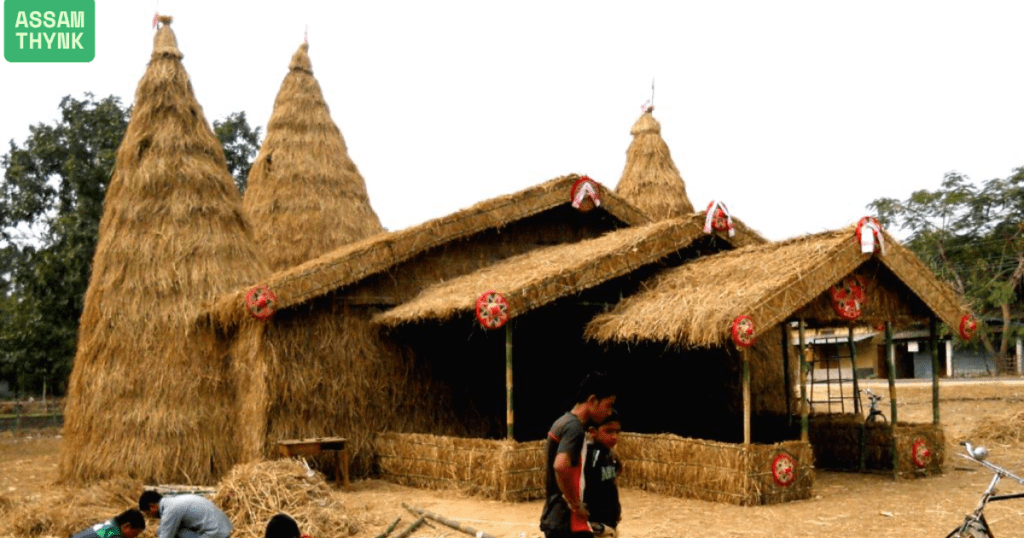
The next morning, large bonfires known as Meji are lit, and offerings are made to the fire gods. After the rituals, people enjoy a variety of traditional foods such as pithas (rice cakes), larus (sweet balls), sesame sweets, and meat dishes.
Magh Bihu also features traditional games like buffalo fights, wrestling, and pot-breaking competitions, especially in rural areas.
Bhogali Bihu is a vibrant expression of gratitude, unity, and joy. It brings people together, strengthens community bonds, and celebrates the hard work of the farmers and the richness of Assam’s agrarian culture.
Significance:
‘Bhogali’ comes from the word ‘Bhog’, meaning feast. It is a community-oriented festival that includes grand feasts, bonfires, and traditional sports.
Customs and Traditions:
The evening before Bhogali Bihu is known as Uruka. People gather for community feasts.
Meji (large bonfires) and Bhelaghar (huts made of bamboo, hay, and leaves) are built.
On the day of Bihu, people light the Meji, offer prayers, and then enjoy festive food.
Traditional dishes like pitha (rice cakes), larus (sweet balls), chira, curd, sesame sweets, and pork dishes are prepared.
Games like buffalo fighting, egg fights, wrestling, and tekeli bhonga (pot-breaking) are organized in villages.
People wear traditional clothes and enjoy with music, laughter, and bonding.
Cultural Essence of Bihu
Bihu is more than just a festival; it is the soul of Assamese culture. Through its songs, dances, rituals, and food, Bihu reflects the intimacy between humans and nature, the importance of agriculture, and the unity among diverse communities.
Bihu Dance:
Performed by young boys and girls, often in fields or on stage.
The movements are graceful, energetic, and expressive, symbolising courtship and joy.
Women wear the mekhela chador (traditional attire) with red and gold patterns, while men wear dhoti and gamusa.
Bihu dance has also gained recognition on national and international platforms, symbolising Assamese identity.
Bihu Songs (Bihu Geet):
The lyrics often speak of love, nature, daily life, and social commentary.
Traditionally sung in the fields or during gatherings, Bihu Geet is accompanied by dhol, pepa, and flute.
Modern versions blend traditional melodies with contemporary instruments.
Role of Traditional Attire and Ornaments
Mekhela Chador: Worn by women; handwoven with motifs.
Gamusa: A symbol of Assamese pride; offered to elders and used in rituals.
Ornaments like junbiri, dugdugi, lokaparo, and kerumoni are worn during Bihu.
These traditional elements not only represent Assamese heritage but are also expressions of identity and creativity.
Bihu and Assamese Identity
Bihu transcends religion, caste, and class. It is celebrated by Hindus, Muslims, Christians, and all ethnic communities alike. It promotes social harmony, equality, and communal participation.
Social Relevance:
Encourages agricultural awareness and respect for farmers.
Strengthens family and community bonds.
Promotes local art, craft, and music.
Modern Celebrations:
In urban areas, Bihu is celebrated in cultural halls, auditoriums, and open-air stages.
Various organizations and clubs host Bihu Xamaroha (festivals) with singing, dancing, and beauty pageants.
Media and social platforms play a major role in spreading Bihu’s reach globally.
Impact on Tourism and Economy
Bihu has become a major cultural attraction for tourists. During the Bihu season:
Tourists flock to Assam to experience folk traditions, ethnic cuisines, and craft fairs.
Local weavers, artisans, and performers find opportunities to showcase and sell their creations.
The festival boosts hospitality, transportation, and retail industries.
Challenges and Preservation
With rapid modernisation, some fear the erosion of traditional values associated with Bihu. The use of synthetic clothes, pre-recorded music, and stage-commercialization has altered some aspects of the festival.
However, efforts are being made to preserve the authenticity:
Schools and colleges host traditional Bihu competitions.
NGOs and cultural bodies promote folk music and weaving.
Government supports Bihu as a state-recognized cultural event.
Conclusion
The Bihu festival is a beautiful blend of joy, gratitude, nature worship, and cultural expression. From the vibrant Rongali Bihu to the contemplative Kati Bihu and the feasting of Bhogali Bihu, the festival represents the life cycle of the Assamese people – sowing, growing, and harvesting.
Bihu teaches us the value of community, tradition, and resilience. It is a celebration that continues to evolve, yet remains deeply tied to the soil of Assam. As long as the Brahmaputra flows and the paddy fields sway, the beats of the dhol and the songs of Bihu will echo in the heart of Assam.

